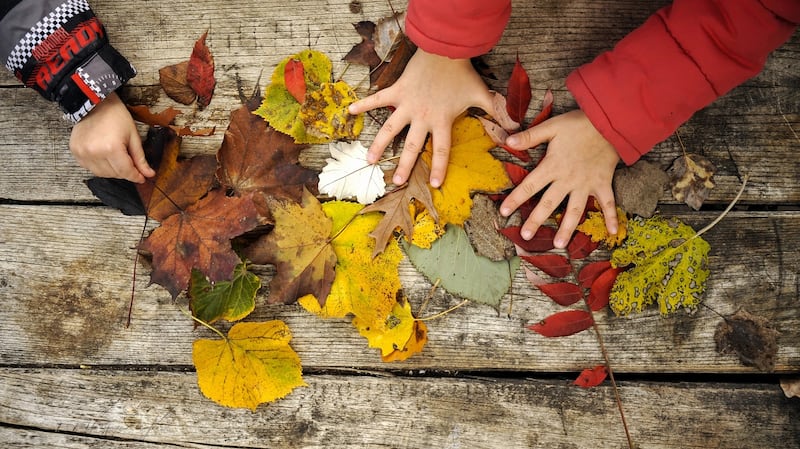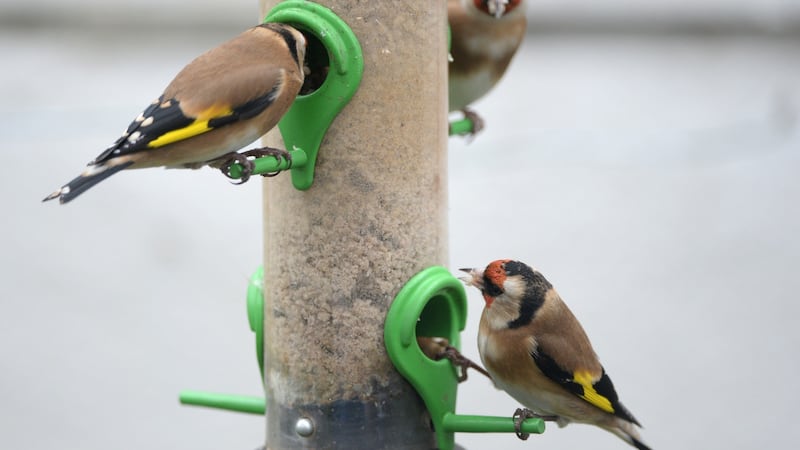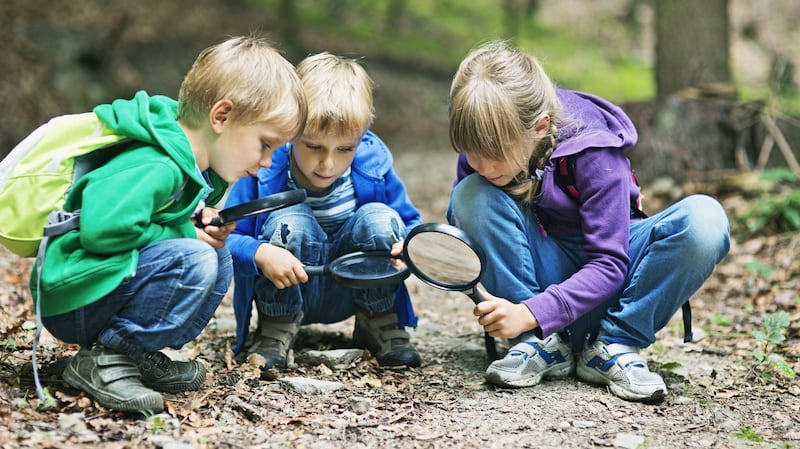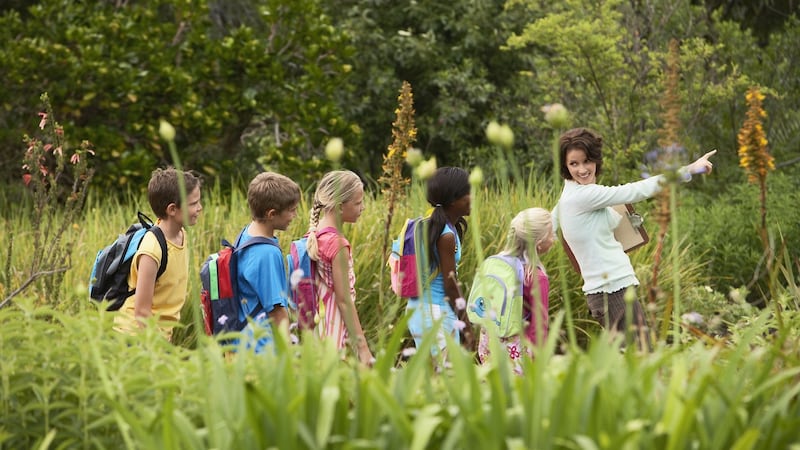While wellbeing is the new buzzword in the school curriculum, many educators feel the key to positive mental health is something which has been with us all along.
"I would see nature as being the real mindful education," says Dr Paddy Madden, Heritage in School specialist, former primary school teacher and college of education lecturer.
“Whether you’re are listening to birds, smelling the flowers or gardening you are in the now and whatever big worry was weighing down on you dissipates, being in nature melts down the worries.”
Madden says teachers play a key role in creating opportunities for children to notice nature. “Forget about the objectives, forget about the assessment, just get them to notice. Noticing nature a few times during the week has a huge effect on their mental wellbeing.”
To this end, we’ve collected some of the best nature-based resources available to schools which may help you to see that sometimes the grass is greener in your own school garden.

Engage with Nature
[ engagewithnature.ieOpens in new window ]
This website offers resources for teachers and children that help promote a sustainable environment, while also encouraging positive climate action and improving personal wellbeing.
It contains month-by-month instructions for schools wishing to create a school garden. There are explanatory videos and downloadable materials for teachers including how to make a cultivation bed, measure a tree or make a scarecrow.
The website also provides hands-on activities for children to do at home with a parent or guardian. Activities range from how to grow seedlings to growing carrots in a dustbin. Each activity is paired with a video explainer.

Birdwatch Ireland
[ birdwatchireland.ieOpens in new window ]
Niall Hatch of Birdwatch Ireland has been visiting schools and delivering workshops for nearly 15 years.
"When I go to schools, they tend to know a lot more about the wildlife of sub-Saharan Africa or the Amazon rainforest than they do about the wildlife of their own county and I think that that is a real shame," says Hatch. "They tend to think of nature as something very far away, something you only experience as a special treat."
Hatch says it is important that children learn about local wildlife so they can see how it relates to their own lives. “People won’t want to protect the things that they don’t understand.”
The Birdwatch Ireland website has a series of downloadable lesson plans and teaching materials for schools. It also offers talks to schools where possible and hopes to provide more workshops for teachers in the future.
“We have learned that while there is certainly a benefit to going in and giving a talk to schools, what is better, sometimes, is to educate the educators so that nature isn’t seen as a half hour break once a year but is something that goes through the ethos of the whole school,” says Hatch.
“A lot of research has been done into what has been termed ‘nature-deficit disorder’,” he adds. “There are strong mental-health benefits from immersion in nature. Especially with Covid and all that is going on, immersion on nature can really help.”
Spring Alive
[ springalive.netOpens in new window ]
This international initiative aims to foster an interest in nature and the conservation of migratory birds in children. They can post their first sightings of birds such as the swift and the cuckoo to the website.
“We are asking people to help us track migratory birds mainly so that we can work out what the average date would be each year for the arrival of these species, not necessarily what the earliest one is but when the bulk of them are coming because that tells us a lot about climate change,” says Hatch.
The website, designed to appeal to children, contains bird fact-files along with images and species related migration information.
The children can also watch videos and live streams via Bird TV and the Spring Alive YouTube page.
The children will find tips on how to build a nest box, how to feed the birds when there is a food shortage and advice on how to become a good birdwatcher.

Nature Cubs Ireland
[ naturecubsireland.ieOpens in new window ]
Zoologist Mairéad Stack is running a series on webinars for third to sixth class primary school students for the month of May.
“I am going to be showing them how to make some nature crafts and talking to them about what they can do for wildlife because quite often they are watching videos about the Amazon but in Ireland we have wildlife and we have wildlife around your school,” says Stack. Children will learn how to identify tracks left by local wildlife such as foxes.
The webinars will also help students identify what they can do in their own garden. “Can you build a little log pile in the corner of your garden which might be used by hedgehogs to snuggle in underneath or put up two different kinds of bird feeders, one that a robin might like and one that a goldfinch might like?” says Stack. “Really simple stuff but really good practical actions for wildlife.”
Webinars run every Thursday in May at 9:30am.

All Ireland Pollinator Plan
[ pollinators.ieOpens in new window ]
This website has a section for schools containing downloadable materials on pollination. The Junior Pollinator Plan explains what pollination is, why it is important and what schools can do to help. The school section of the website has short videos and fun animations for the students to watch.
There are a series of 10 lesson plans. Each lesson has learning objectives and all necessary information compiled for teachers to use. They come with suggested activities based on class level and ability.
“The All Ireland Pollinator Plan has done a magnificent job of providing resources to schools and communities,” says Stack. “It has made massive difference in terms of providing resources to teachers, literally giving them the information which has been lacking up until now.”
The nature table
The nature table that once held pride of place in every primary school has been uprooted in recent years – but many are reintroducing it back into its educational habitat.
“I learned my nature in primary school through a nature table,” says Madden. “It was interactive, we brought in stuff every day, the teacher spent half an hour each day on what we found.”
Madden says this empowered them as young learners because they were leading the learning.
“We loved that time of day and that is what got me into nature and that what was landed me into my career.”
Madden says the table should be interactive and reflect the seasons and should be changed weekly.
Rewrite Climate
[ rewrite.ieOpens in new window ]
This solutions-focused climate action programme aims to not only provide students with practical hands-on tasks that enable them to be proactive in their approach to climate action but it also aims to reduce the anxiety many students feel around climate change.
"Fear does not kindle creativity, guilt does not inspire new ideas, and anxiety does not drive action. We need to give our students a sense of hope, a feeling of ownership, and the promise of immediate tangible results. We want to give students the tools to help rewrite their future, and the future of the planet," says Vicki Brown, chief executive of Cool Planet Experience.
The Rewrite Climate programme, currently aimed at transition-year students, has 12 climate change lessons on topics such as transport, energy, sustainable fashion and food.
The school grounds
"We are very fortunate in our school that we have a beautiful school garden and a green-fingered caretaker, the beauty of the on-site garden being its accessibility," says Niamh Egan, primary school teacher at St Canice's boys school in Finglas, Dublin.
Teachers have been using the garden area for social skills lessons as well as promoting nurturing and co-operative behaviours.
“The digging, planting and watering have great benefits for students’ fine and gross motor skills. Children have a natural affinity to nature and a school garden, or even a few raised beds, can really create a fantastic learning environment.”



















